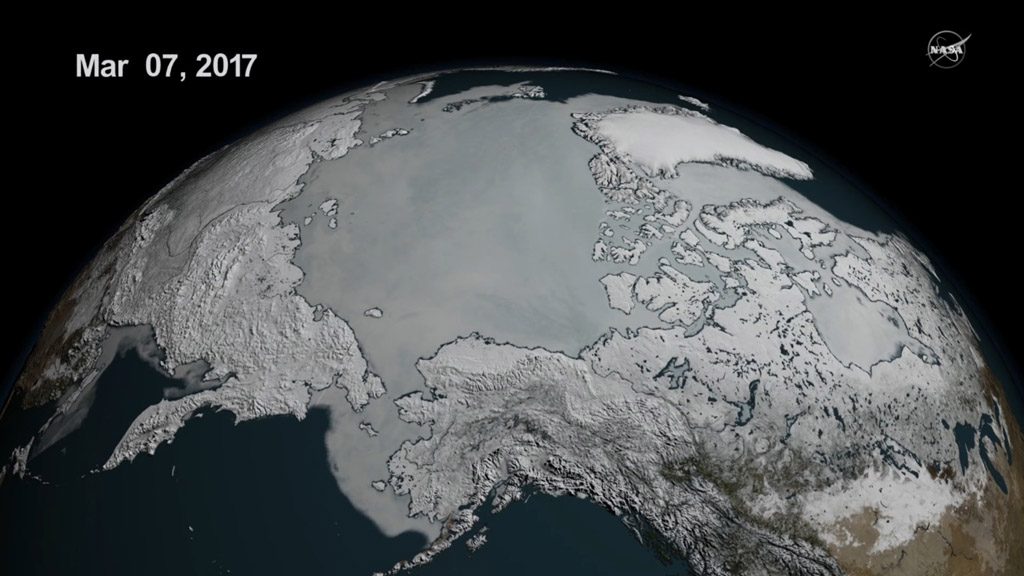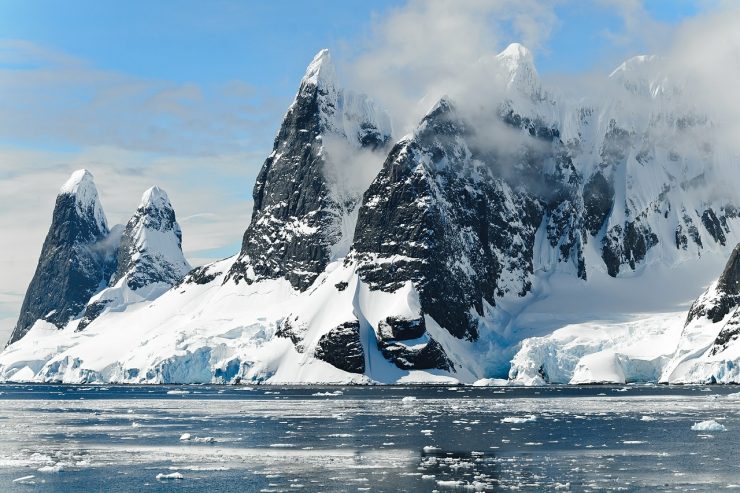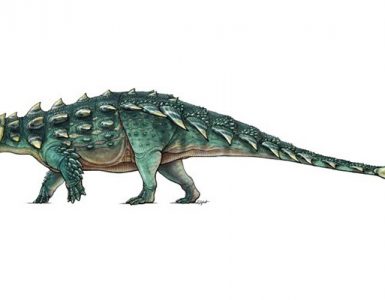There is a lot of ice floating in the Arctic Ocean, and this ice melts every year during summer and again reforms in the winter, the extent of sea ice is usually highest in the month of March. The worrying fact is that the ice extent is at its lowest this year compared to what it has been in the last 38 years i.e. the time since when satellite records of ice extent has been kept. This is three years in a row that ice extent is hitting low points.
On 7th March the ice extent was measured at 14.42 million sq. km, about hundred thousand sq. km less than what it was in 2016. It is also about 500,000 sq. km less than the average maximum extent for the last 36 years. The condition of polar ice has been a matter of concern for scientists for a while now. Experts have predicted that as the global temperature rises, the ice cover at the poles will keep shrinking and the sea level will keep rising. It is starting to look as if their worst fears are coming true.

But global warming though a huge contributing factor might not be the only factor that is causing the ice coverage to shrink. The past winter was one of the warmest that the Arctic has ever seen, some stretches of the Arctic had temperatures as high as 20 degree Celsius above normal which is unheard of, naturally the ocean water was also warmer, which prevented ice formation. In addition to this, there were some storms this year which disturbed the water and slowed down ice formation further. Though scientists say that all the secondary problems are actually caused by the one big primary problem; global warming.
On the other side of the globe, Antarctica is not faring any better. Antarctic summer sea ice is also at a record low. On March 3rd, southern summer ended and the sea ice cover around Antarctica was measured at 2.11 million square kilometers which is 184,000 sq. km less than the previous lowest extent that occurred in 1997. In 2016 Antarctica experienced very rapid ice loss which only slowed down in February 2017. Over the whole period daily Antarctic sea ice extent has continuously been at its lowest levels.
“There’s a lot of year-to-year variability in both Arctic and Antarctic sea ice, but overall, until last year, the trends in the Antarctic for every single month were toward more sea ice,” said Claire Parkinson, a senior sea ice researcher at Goddard. “Last year was stunningly different, with prominent sea ice decreases in the Antarctic. To think that now the Antarctic sea ice extent is actually reaching a record minimum, that’s definitely of interest.”





















